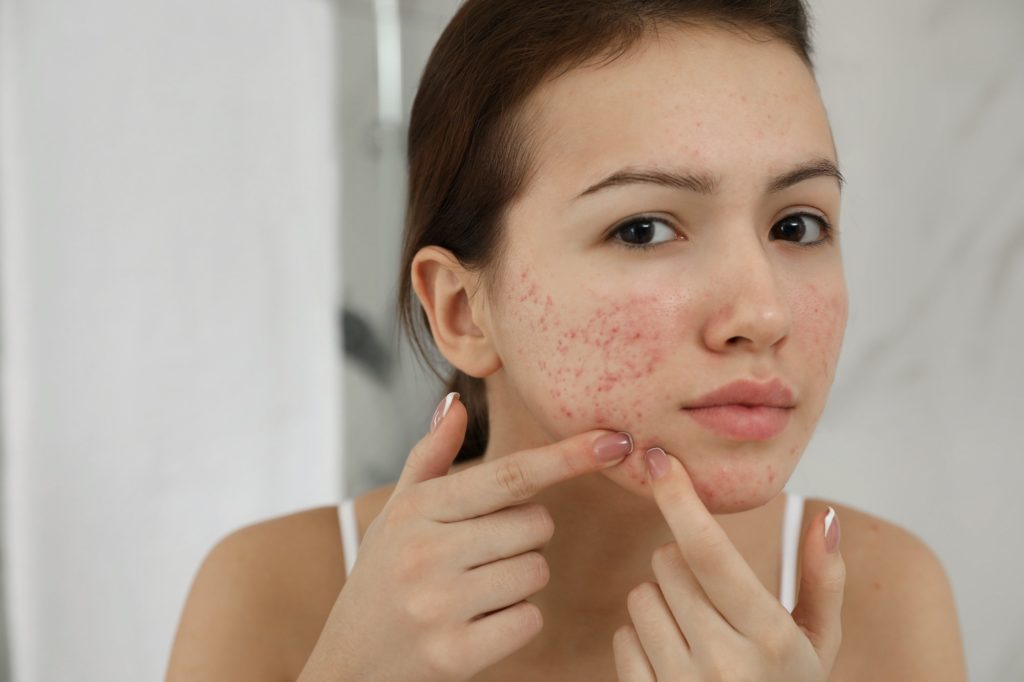Acne is a chronic inflammatory skin disease that shows up on the skin as red pimples, pustules, and deeper bumps (known as nodules and cysts). If left untreated, acne typically leads to scarring that can show as a changes in the skin contour and changes in the skin color.
It is a common disorder affecting approximately 80% of young adolescents. However, acne can typically persist into adulthood as well, especially in women and is known as adult female acne.
Acne presents are three types of lesions: whiteheads, blackheads, and deeper red bumps known as nodules.
WHAT CAUSES ACNE?
The exact cause of acne is dependent on many factors such as genetics, environment, more These lesions are the result of an overproduction of sebum, which are oily secretions of the skin’s oil glands (known as sebaceous glands). Although acne is not an infection, bacteria on the skin may have a significant contribution to the development of acne lesions. Acne typically occurs on the face, neck, chest, and back. The severity of acne is assessed by carefully observing the location, type, and number of lesions.
TREATING ACNE
The treatment of acne requires a holistic approach. This means that we will discuss medications, nutrition, and lifestyle approaches. The goal is to provide control and to reduce both the psychological and physical burden of the acne and acne scarring.
Special note on diet: Although diet does not cause acne, some dietary foods may worsen acne. For example, dairy (examples are milk and cheese) and high-glycemic foods (sweets, sodas, sweetened teas) are associated with worsened acne.
ACNE REFERENCES
Williams HC, Dellavalle RP, Garner S. Acne vulgaris. Lancet.2012;379(9813):361-372; PMID: 21880356



